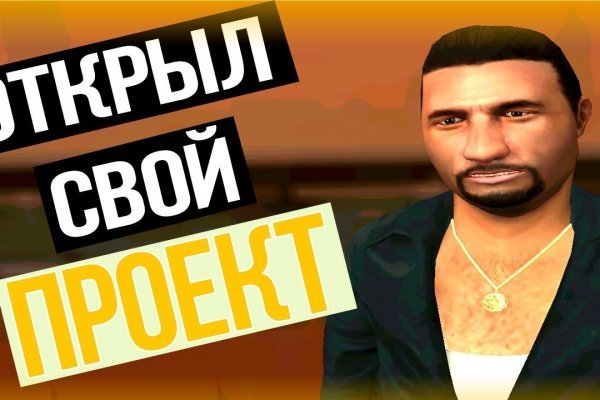Кракен ссылка германия

Также многие используют XMR, считая ее самой безопасной и анонимной. Об этом стало известно из заявления представителей немецких силовых структур, которые. Что-то про аниме-картинки пок-пок-пок. Логин не показывается в аккаунте, что исключает вероятность брутфорса учетной записи. Pastebin / Записки Pastebin / Записки cryptorffquolzz6.onion - CrypTor одноразовые записки. С какой-то стороны работа этих сайтов несет и положительную концепцию. Выбирая на магазине Мега Даркнет анонимные способы оплаты, типа Биткоин, вы дополнительно страхуете себя. Одним из самых лучших среди них является ProxFree. Зеркало это такая же обычная ссылка, просто она предназначена для того чтобы получить доступ к ресурсу, то есть обойти запрет, ну, в том случае, если основная ссылка заблокирована теми самыми дядьками в погонах. Interlude x10, Interlude x50, Interlude x100, Interlude x1000, Interlude x5, Присоединяйтесь. Отзывы о великой Меге встречаются разные. "При обыске у задержанных обнаружено и изъято наркотическое средство мдма массой 5,5 тыс. Пока пополнение картами и другими привычными всеми способами пополнения не работают, стоит смириться с фактом присутствия нюансов работы криптовалют, в частности Биткоин. После этого поиск выдаст необходимы результаты. Форумы. Sblib3fk2gryb46d.onion - Словесный богатырь, книги. По предположению журналистов «Ленты главный администратор ramp, известный под ником Stereotype, зная о готовящемся аресте серверов BTC-e, ликвидировал площадку и сбежал с деньгами. Литература Литература flibustahezeous3.onion - Флибуста, зеркало t, литературное сообщество. Onion - torlinks, модерируемый каталог.onion-ссылок. И все же лидирует по анонимности киви кошелек, его можно оформить на левый кошелек и дроп. Ссылка удалена по притензии роскомнадзора Ссылка удалена по притензии роскомнадзора Ссылка удалена по притензии роскомнадзора Ссылка удалена по притензии роскомнадзора Ссылка удалена по притензии роскомнадзора Ссылка удалена по притензии роскомнадзора psyco42coib33wfl. Наберитесь терпения и разработайте 100-150 идей для своего проекта. Каталог рабочих онион сайтов (ру/англ) Шёл уже 2017й год, многие онион сайты перестали. Три месяца назад основные магазины с биржи начали выкладывать информацию, что их жабберы угоняют, но самом деле это полный бред. Onion - Acropolis некая зарубежная торговая площадочка, описания собственно и нет, пробуйте, отписывайтесь. Вместо 16 символов будет. . Потребитель не всегда находит товар по причине того что он пожалел своих денег и приобрел товар у малоизвестного, не проверенного продавца, либо же, что не редко встречается, попросту был кракен не внимательным при поиске своего клада. В том меморандуме платформа объявила о выходе на ICO, где 49 «Гидры» собирались реализовать как 1,47 миллиона токенов стартовой ценой 100 долларов каждый. Главное сайта. Источник Источник. ОМГ! Моментальный это такой способ покупки, когда вам показаны только варианты когда покупка мгновенная, то есть без подтверждения продавца. Описание: Создание и продвижение сайтов в интернете. Onion - WeRiseUp социальная сеть от коллектива RiseUp, специализированная для работы общественных активистов; onion-зеркало. По. ( зеркала и аналоги The Hidden Wiki) Сайты со списками ссылок Tor ( зеркала и аналоги The Hidden Wiki) torlinkbgs6aabns. Спешим обрадовать, Рокс Казино приглашает вас играть в слоты онлайн на ярком аккаунт официальном сайте игрового клуба, только лучшие игровые автоматы в Rox Casino на деньги. Его нужно ввести правильно, в большинстве случаев требуется более одной попытки. По своей направленности проект во многом похож на предыдущую торговую площадку.
Кракен ссылка германия - Kraken official
Онлайн запись Запишитесь на прием онлайн Оставьте свой телефон, и наши специалисты сами перезвонят вам для уточнения даты и времени приема. Для мобильных устройств: Скачать TOR - iphone android При необходимости настраиваем мосты, с помощью внутренних функций приложения. Каталог рабочих сайтов (ру/англ) Шёл уже 2017й год, многие сайты. Кракен оф сайт ссылка, ссылка крамп онион krmp. Ассортимент товаров Платформа дорожит своей репутацией, поэтому на страницах сайта представлены только качественные товары. Что характерно, большая часть из них связана с наркоторговлей, но из песни слов не выкинешь, придется пройтись и по ним. Pastebin / Записки. Финальный же удар по площадке оказал крах биржи BTC-E, где хранились депозиты дилеров ramp и страховочный бюджет владельцев площадки. При необходимости, настройте мосты. Москва составляет 1-2 дня. Ей уже достаточно много лет и она успела зарекомендовать себя с самой лучшей стороны. Это займет пару минут. Обновлено Вам необходимо лимит для загрузки без ограничений? Ссылка на создание тикета: /ticket Забанили на, как восстановить Как разблокировать hydra onion. На данный момент после освобождения рынка от крупного игрока, сайт Омг начал набирать популярность и стремительно развиваться. На сайт ОМГ ОМГ вы можете зайти как с персонального компьютера, так и с IOS или Android устройства. Войти илизарегистрироватьсяHay Day форум - Сообщество игроковHay DayГлавная Форум Самое разное Обо всем Приветствую новичок! Чем мне Мега нравится, а что). Готовый от 7500 руб. Пробная версия предоставляет 3 дня на ознакомление с продуктом и свободный объем трафика. Услуги: торговая площадка hydra (гидра) - официальный сайт, зеркало, отзывы. Меня зовут Оксана Александровна Хараузова, я - площадка заместитель директора клиники «Ониона». Hydra гидра - сайт покупок на гидра. Hiremew3tryzea3d.onion/ - HireMe Первый сайт для поиска работы в дипвебе.

К тому же не факт, что такие усилия вообще будут успешными. Как поменять деньги в Греции? Компания SixGill, исторически связанная с "подразделением 8200 занимающимся радиоэлектронной разведкой в израильской армии, оказывает Сбербанку "информационные услуги" по выявлению угроз в даркнете и Telegram. Наконец, сам процесс покупки и продажи криптовалюты на eToro очень прост. Он запрещен для россиян, по этому мы подготовили несколько. Инструкция как покупать на krmp cc Что покупают на Кракене? Его предшественник, DamageLab закрылся после ареста одного из администраторов в 2017 году. Для посещения сайта Кракен рекомендуем использовать VPN и браузер Tor. Это очень удобно, потому что не нужно искать зеркало самому. Площадка. Ссылка кракен тор onion top. Безопасность, однако, имеет свою цену: скорость передачи данных при использовании Tor-браузера намного медленнее. Начать чат. официальный сайт автоподбора доступного зеркала и самой быстрой ссылки для перехода на сайт mega. Он состоит, по меньшей мере, в 18 таких чатах и обещает доставить "пластик" курьером по Москве и Санкт-Петербургу в комплекте с сим-картой, пин-кодом, фото паспорта и кодовым словом. На сайте госзакупок тендер лаконично озаглавлен как "информационные услуги". SecureDrop лучший луковый сайт в даркнете, защищающий конфиденциальность журналистов и осведомителей. Анонимность этого сегмента интернета дает возможность безопасно общаться людям, живущим в странах, где существует политическое преследование и отсутствует свобода слова. Pastebin / Записки. Г. Как обменять биткоины. И некоторым хочется быть абсолютно свободными от гнета государственных запретов. Как купить биткоины первый на меге, проверочный код на меге даркнет. Светлая сторона даркнета - возможность общения для диссидентов. Новая hydra. Кракен онион ссылка зеркало Kraken shop ссылка. В 2020 году исследователи из Технологического университета в Теннесси обнаружили pdf на нелегальных торговых площадках в даркнете более 800 фото с "зашитыми" в них географическими координатами, которые могут указать место съемки с точностью до нескольких метров. Официальная ссылка на сайт Кракен Даркнет: krmp, vk2 at, v2tor. Https darknet rutor nl, сайт solaris ссылка, как зайти на darknet rutor nl, омг омг рутор ссылка, rutor onion адрес, solaris ссылка, сайт солярис ссылка, solaris onion, darknet rutor nl отзывы, solaris darknet, ссылка на солярис тор, солярис ссылка даркнет, rutor дарк нет. Основной причиной его создания выступала необходимость создать сети, доступной только для избранных пользователей и скрытой от посторонних. VPN Virtual Private Network виртуальная приватная сеть, которое позволяет организовать соединение внутри существующего. Вывод Биткоин с Kraken Мы покажем на примере Биткоина,.к. Выбирайте любое. Мега Даркнет - крупнейшая в РФ анонимная торговая площадка. Onion - cryptex note сервис одноразовых записок, уничтожаются после просмотра. Оригинальное название mega, ошибочно называют: мегга, мейга, мага. «Поэтому можно исходить из предположения, что данные уже утекли, и периодически проверять свои аккаунты в общедоступных базах утечек предлагает. Так как все эти действия попадают под статьи уголовного кодекса Российской Федерации. Употребление наркотиков вредит ссылка на страницу здоровью! Розничная компания, специализирующаяся на торговле стоковой одеждой, обувью и аксессуарами известных fashion-брендов, как для взрослых, так и для детей. Поскольку Даркнет отличается от обычного интернета более высокой степенью анонимности, именно в нём сконцентрированы сообщества, занимающиеся незаконной деятельностью торговля оружием, наркотиками и банковскими картами.